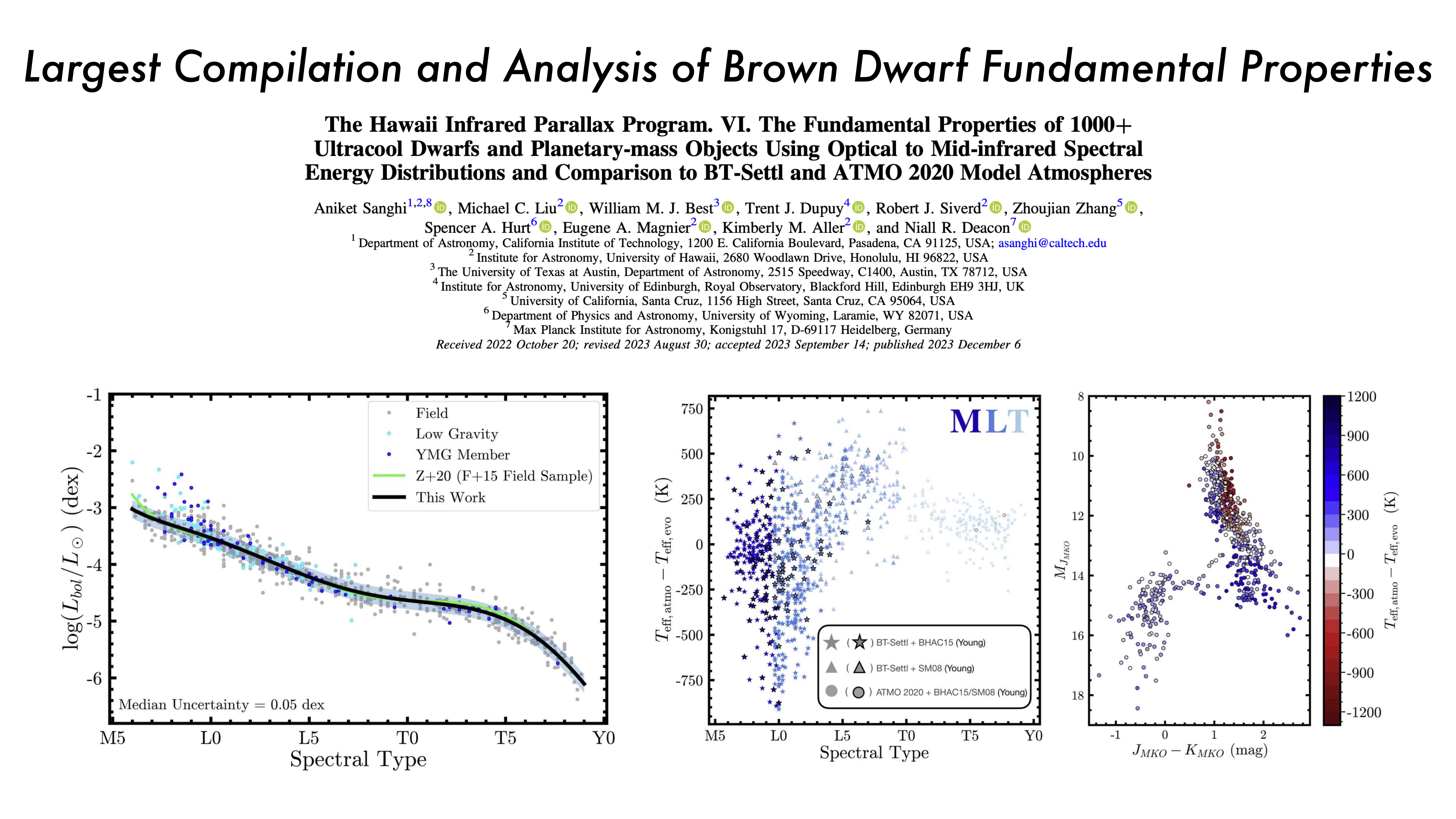
As the lowest mass products of star formation, brown dwarfs form a bridge between stars and giant planets. Given their similar age and temperature as giant planets, brown dwarfs offer an incredible opportunity to indirectly study giant planet physical and atmospheric properties in significantly more observationally favorable conditions.
I leveraged recent advances in high-precision parallax measurements to derive the bolometric luminosities of 1000+ ultracool dwarfs (spectral types M6 and later) by directly integrating flux-calibrated optical to mid-infrared spectral energy distributions (SEDs) constructed entirely using The UltracoolSheet. My SEDs consist of low resolution near-infrared NASA/IRTF SpeX Prism spectra, optical photometry from the Pan-STARRS1 survey, and mid-infrared photometry from the WISE survey and/or Spitzer/IRAC. Coupling the derived bolometric luminosities and uniformly analyzed age estimates of these objects with evolutionary models, I estimated the masses, radii, and effective temperatures of substellar objects across the M, L, and T spectral sequence. This work increased the sample size of ultracool dwarfs with semi-empirical fundamental physical parameters by a factor of ~5. Additionally, I constructed and analyzed relationships between luminosity and temperature as functions of spectral type and investigate atmospheric model systematics. The calculated fundamental parameters will serve as a critical resource for future studies on stellar/substellar mass function, brown dwarf evolutionary models, and exoplanet characterization. The fundamental parameter estimates are publicly available here.
Beyond this work, my techniques have proved useful in the wider context of the field. I used my SED analysis pipeline to calculate the integrated-light luminosity of the brown dwarf binary VHS 1256-1257 AB, which in turn has led to precise constraints on the mass of its planetary-mass companion VHS 1256-1257 b, the first substellar companion for which JWST has delivered a complete infrared spectrum. My luminosity and mass measurement for brown dwarf binary WISEP J101905.63+652954.2 combined with the detection of polarized radio pulsations by the lead authors of the study led to important constraints on the magnetic fields of the component brown dwarfs. Finally, I synthesized JWST/NIRCam, Euclid, and Roman photometry for 800+ ultracool dwarfs to construct absolute magnitude-spectral type relations. My relations enable the calculation of photometric distances for ultracool dwarfs observed with JWST in the absence of parallax measurements. Additionally, using the synthesized photometry to generate color-color figures can help distinguish high-redshift galaxies from brown dwarf interlopers.
Associated Papers:
(1)
Sanghi, A., Liu, M. C., Best, W. M. J., et al., 2023, ApJ, 959, 63
(2) Sanghi, A., Liu, M. C., Best, W. M. J.,
et al., 2023, RNAAS, 7, 194.
(3) Sanghi, A., Liu, M. C., Best, W. M. J.,
et al., 2024, RNAAS, 8, 137.
Related Works:
(1)
Vedantham, H. K., Dupuy, T. J., Evans, E. L., Sanghi, A., et al., 2022, A&A, 675, L6.
(2) Dupuy, T. J., Liu, M. C., Evans E. L., et al. (incl. Sanghi, A.), 2023, MNRAS, 519, 1688.

Associated Papers:
(1)
Best, W. M. J., Sanghi, A., Liu, M. C., et al., 2024, ApJ, 967, 115